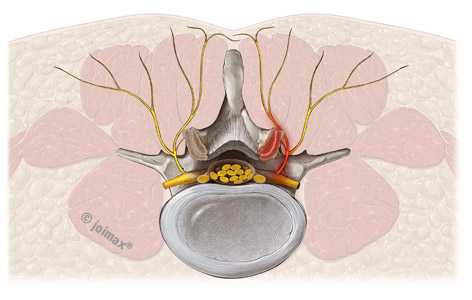Facet joint syndrome (a.k.a. osteoarthritis) is a pain at the joint between two vertebrae in the spine. When cartilage is present in these joints, they can move smoothly against each other without grinding. Each joint is also lubricated with synovial fluid for additional protection from wear and tear. Without these joints, our backs would lack flexibility and be unable to bend and twist.
Combined with age, facet joint pain can result from a combination of:

- Overexertion
- Incorrect weight bearing
- Obesity
- Poor posture
- Physical inactivity
- Whiplash accidents
A swollen or inflamed facet joint causes pain, numbness, and muscle weakness which will affect different parts of the body depending on which nerves are affected. If the nerves affected are in your cervical spine, you may have symptoms in your neck, shoulders, arms, and hands. If the nerves are in your lumbar spine you may have symptoms in your buttocks, legs, and feet.

